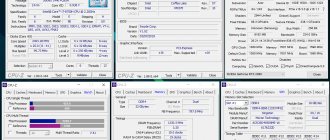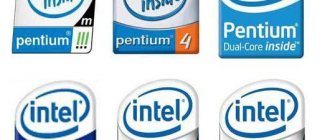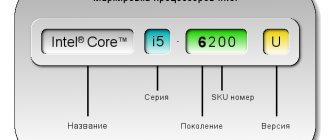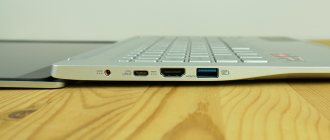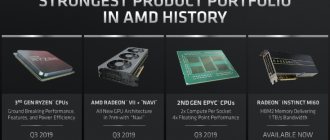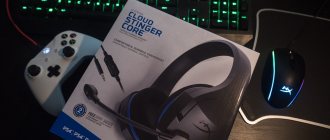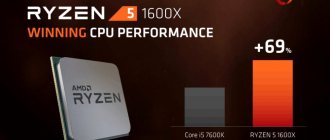i9-10900K vs i9-9900K: what can be squeezed out of the new Intel Core on the old architecture
A little over a year has passed since I tested the brand new Intel Core i9-9900K. But time passes, everything changes, and now Intel has released a fresh line of 10th generation Intel Core i9-10900K processors. What surprises do these processors have in store for us and is everything really changing? Let’s talk about it right now.
Comet Lake-S
The code name for the 10th generation of Intel Core processors is Comet Lake.
And yes, it's still 14 nm. Another Skylake refresh, which Intel themselves call “evolution.” Their right. Let them call it what they want. In the meantime, we’ll see what has changed in the new generation in comparison with the previous, ninth. And we’ll find out how far the i9-10900K is from the i9-9900K. So, let's go point by point. Changing socket
The LGA 1151 (Socket H4) socket was developed in 2020 and lasted for 5 years, having seen as many as four generations of processors, which is generally not typical for Intel, which likes to change the socket every two years. However, it is worth noting that the company more than compensated for this point with incompatibility between new/old processors and chipsets...
Yes, nothing lasts forever, and Intel, simultaneously with the release of the 10th generation, rolled out a new socket - LGA 1200 (Socket H5). Despite the fact that it is compatible with mounting holes (75 mm) with existing cooling systems, the illusory hope that they will not have to be changed dissolved after the first preliminary tests. But more on that later.
More cores, higher frequency
This is already a traditional Intel way out of the situation with nanometers: if you don’t change the technical process, then add cores and raise the frequencies. It worked this time too. The Intel i9-10900K processor was equipped with two cores, respectively, 4 threads in Hyper-threading (HT). As a result, the total number of cores increased to 10, and the number of threads increased to 20.
Because the process has not changed, the heat dissipation requirement, or TPD, has changed from 95 W to 125 W - an increase of more than 30%. Let me remind you that these are indicators when all cores are running at the base frequency. Cooling this “brazier” with air is not at all easy. It is advisable to use a water cooling system (WCO). But there is a nuance here too.
If the base frequency of the new processor increased by only 100 MHz - from 3.6 to 3.7, then with Turboboost everything became more interesting. If you remember, the i9-9900K in Turboboost is capable of delivering 5 GHz to one core (rarely two), 4.8 GHz to two, and the remaining ones run at 4.7 GHz. In the case of the i9-10900K, one core now runs at 5.1-5.2 GHz, and all others at 4.7 GHz. But Intel didn't stop there.
In addition to the already familiar Turbo Boost technology, mega-superturboboost has appeared. Officially it's called Thermal Velocity Boost (TVB)
. It should be noted that this technology was introduced back in the eighth generation of Intel Core, but only selected representatives received it. For example, I personally know the i9-9980HK and i9-9880H.
The essence of the technology is that at a certain processor temperature, the frequency of one or more cores rises above Turboboost. The value of the added frequency depends on how much lower the processor operating temperature is than the maximum. The maximum frequency of processor cores with Intel Thermal Velocity Boost technology enabled is achieved at an operating temperature of no higher than 50°C. As a result, in TVB mode, the clock frequency of one core rises to 5.3 GHz, and the remaining cores to 4.9 GHz.
Since in the new generation there are two more cores, in a state of maximum auto overclocking with all types of “boosts” this “stove” emits up to 250 W, and this is already a challenge even for a water cooling system (WCO), especially in a compact case design, without remote control water block...
They talked about the cores, explained about the frequencies, complained about the socket, let's move on. The main changes include a slightly increased L3 cache and an increased frequency of supported RAM - from DDR-2666 to DDR4-2933. That's basically all. Intel didn't even update the built-in graphics core. The amount of RAM has also not changed, the same 128 GB was inherited from the previous generation. That is, as always with refreshes: they added cores and frequencies, however, they also changed the socket. There are no more significant changes, at least in terms of servers. I suggest moving on to testing and seeing how the performance of the new generation has changed compared to the previous one.
Testing
Two processors from the Intel Core line are involved in testing:
- Ninth generation i9-9900K
- Tenth generation i9-10900k
Performance characteristics of platforms
Intel i9-9900K processors
- Motherboard: Asus PRIME Q370M-C
- RAM: 16 GB DDR4-2666 MT/s Kingston (2 pcs.)
- SSD drive: 240 GB Patriot Burst (2 pieces in RAID 1 - a habit developed over the years).
Intel i9-10900K processors
- Motherboard: ASUS Pro WS W480-ACE
- RAM: 16 GB DDR4-2933 MT/s Kingston (2 pcs.)
- SSD drive: 240 GB Patriot Burst 2 pieces in RAID 1.
Both configurations use single-unit water-cooled platforms.
But there is a nuance... In order not to lose TVB frequencies and to start up the Intel i9-10900K normally, I had to assemble a powerful custom water cooling system (hereinafter referred to as WCO) for the platform with the tenth generation Core. This required some effort (and a lot), but this solution allowed us to get a stable 4.9 GHz in each core at the peak loads without crossing the temperature threshold of 68 degrees. Salute to the customization heroes. Here I will allow myself a slight digression from the topic and explain that this approach to the matter is dictated solely by pragmatic considerations. We find technical solutions that provide maximum performance with minimal rack utilization, while achieving an adequate cost. At the same time, we do not overclock hardware and use only the functionality that was included by hardware developers. For example, standard overclocking profiles, if the platform has any at all. No manual setting of timings, frequencies, voltages. This allows us to avoid all sorts of surprises. As, in fact, preliminary testing, which we conduct before putting ready-made solutions into the hands of clients.
It is also no coincidence that we always test in single-unit configurations - such testing is quite enough to ensure the reliability of the solution found. As a result, the client receives proven equipment and maximum speed at the lowest price.
Returning to our i9-10900K, I note that the temperature of none of the compared processors rose above 68 degrees. This means that the solution, along with other advantages, also has good overclocking potential.
Software part:
OS CentOS Linux 7 x86_64 (7.8.2003). Kernel: UEK R5 4.14.35-1902.303.4.1.el7uek.x86_64 Optimizations made relative to the standard installation: added options for launching the kernel elevator=noop selinux=0 Testing was carried out with all patches from the Specter, Meltdown and Foreshadow attacks backported to this kernel.
Tests that were used
1. Sysbench 2. Geekbench 3. Phoronix Test Suite
Detailed description of tests Geekbench Test
A package of tests carried out in single-threaded and multi-threaded mode. As a result, a certain performance index is issued for both modes. In this test we will look at two main indicators:
- Single-Core Score - single-threaded tests.
- Multi-Core Score - multi-threaded tests.
Units of measurement: abstract "parrots".
The more "parrots", the better. Sysbench test
Sysbench is a package of tests (or benchmarks) for assessing the performance of various computer subsystems: processor, RAM, data storage devices. The test is multi-threaded, on all cores. In this test, I measured one indicator: CPU speed events per second - the number of operations performed by the processor per second. The higher the value, the more efficient the system.
Phoronix Test Suite
Phoronix Test Suite is a very rich set of tests. Almost all the tests presented here are multi-threaded. The only exceptions are two of them: single-threaded tests Himeno and LAME MP3 Encoding.
In these tests, the higher the score, the better.
- John the Ripper multi-threaded password guessing test. Let's take the Blowfish crypto algorithm. Measures the number of operations per second.
- The Himeno test is a linear Poisson pressure solver using the Jacobi point method.
- 7-Zip Compression - 7-Zip test using p7zip with integrated performance testing feature.
- OpenSSL is a set of tools that implement the SSL (Secure Sockets Layer) and TLS (Transport Layer Security) protocols. Measures the performance of RSA 4096-bit OpenSSL.
- Apache Benchmark - The test measures how many requests per second a given system can handle when executing 1,000,000 requests, with 100 requests running simultaneously.
And in these, if less is better - in all tests the time it takes to complete it is measured.
- C-Ray tests CPU performance on floating point calculations. This test is multi-threaded (16 threads per core), will shoot 8 rays from each pixel for anti-aliasing and generate a 1600x1200 image. The test execution time is measured.
- Parallel BZIP2 Compression - The test measures the time required to compress a file (Linux kernel source code .tar package) using BZIP2 compression.
- Encoding of audio data. The LAME MP3 Encoding test runs in one thread. The time taken to complete the test is measured.
- Video data encoding. ffmpeg x264 test - multi-threaded. The time taken to complete the test is measured.
Test results
i9-10900K is better than its predecessor by as much 44%
. In my opinion, the result is simply gorgeous.
The difference in the single-threaded test is total 6,7%
, which is generally expected: the difference between 5 GHz and 5.3 GHz is the same 300 MHz. This is exactly 6%. And there were some conversations 
But in the multi-threaded parrot test, the new product has almost 33%
more. Here TVB played an important role, which we were able to use almost to the maximum with a custom SVO. At the peak, the temperature in the test did not rise above 62 degrees, and the cores operated at a frequency of 4.9 GHz.
Difference 52,5%
. Just as in the Sysbench and multi-threaded Geekbench tests, such a significant lead is achieved due to CBO and TVB. The temperature of the hottest core is 66 degrees.
In this test, the difference between processors of different generations is 35,7%
. And this is the same test that keeps the processor under maximum load 100% of the time, warming it up to 67-68 degrees.
97,8%.
The probability of an almost twofold superiority due to 2 cores and a few megahertz is “extremely small”. Therefore, the result is more like an anomaly. I assume that there is either optimization of the test itself, or optimization of the processor. Or maybe both. In this case, we will not rely on the results of this test. Although the figure is impressive.
But here I am absolutely sure that optimization was done in the test itself. This is also proven by repeated tests of AMD Ryzen, which pass it much better, despite the fact that Ryazan is not so strong in single-threaded tests. Therefore, the advantage is 65%
will not count. But it was simply impossible not to talk about it. Nevertheless, we write one and keep two in mind.
The difference between generations - 44,7%
. Everything is fair here, so we count the result. After all, this is exactly the test in which maximum performance is squeezed out in a single-threaded load. On the one hand, you can see the work done to refine and optimize the kernel - refresh by refresh, but something under the hood was clearly optimized. On the other hand, such results may indicate that we were unable to squeeze out the maximum last time in the same test with the i9-9900K. I will be glad to read your thoughts on this matter in the comments.
The tenth generation confidently overtakes the ninth by 50,9%
. Which is quite expected. Here the cores and frequencies added by the Intel i9-10900K rule.
The difference between generations - 6,3%
. In my opinion, the result is quite controversial. In future articles, I'm considering abandoning this test altogether. The fact is that on systems with more than 36 cores (72 threads), the test does not pass at all with standard settings, and the difference in results sometimes has to be calculated to the third decimal place. Well, we'll see. You can share your opinion on this matter in the comments.
The difference is 28%
. There are no surprises, anomalies or optimizations noticed here. Pure refresh and nothing more.
i9-10900K beats i9-9900K by 38,7%
. As with the results of the previous test, the difference is expected and clearly shows the real gap between processors on the same microarchitecture.
So, let's summarize. In general, nothing unexpected - the i9-10900K outperforms its predecessor i9-9900K in all tests. Q.E.D. The price for this is heat generation. If you are looking for a new processor for home use and are going to squeeze maximum performance out of the tenth generation Core, I recommend that you think about the cooling system in advance, because coolers alone will not be enough. Or come to us for grandfathers. A ready-made solution on a good platform and with a very decent CBO, which, in addition to all other advantages, as we found out, also has overclocking potential.
The testing used dedicated 1dedic.ru servers based on Intel Core i9-9900K and i9-10900K processors. Any of them, as well as configurations with an i7-9700K processor, can be ordered with a 7% discount using the promotional code INTELHABR
. The discount period is equal to the payment period selected when ordering the server. The discount using the promotional code is combined with the discount for the period. The promotional code is valid until December 31, 2020 inclusive.
How the Core i9 changes the Skylake series
By overcoming the confusion and disagreement about the platform, you will still reap a hefty reward. The Skylake-X processor itself is something to admire, as it's designed a little differently than previous high-end consumer processors.
Previous CPUs, whether “enthusiast” or “extreme”, were basically similar in design. For example, the 4-core Haswell Core i7-4770K is not particularly different from the 8-core Haswell-E Core i7-5960X, with the possible exception of support for 4-channel RAM.
With Skylake-X, Intel breaks this tradition by introducing extremely significant changes to the design. The most noticeable is the increase in Mid-Level Cache (MLC), or L2 cache: Intel has increased it to 1 GB per core, quadrupling it from 256 MB on last year's Broadwell-E models and most Intel processors. The Last-Level Cache (L3) meanwhile becomes smaller, 1.375 MB per core versus 2.5 MB of the previous Broadwell-E chip, but Intel compensates for this loss with a larger MLC cache, as well as the use of a non-inclusive cache design. Compared to Broadwell-E's inclusive design, which can continue to store data that is no longer needed, the non-inclusive cache tries to keep track of what is worth storing, so it promises to make more efficient use of available space.
Skylake is very different from the previous Skylake-X line, and this largely depends on the AVX512 cache and the new mesh architecture
Intel is also changing the ring bus architecture that has been in use for several years (including Kaby Lake and Skylake) to a new mesh architecture. Think of a 4-core processor as four houses connected by a bus line that stops at each house. This all works great as long as there are 12 to 18 houses in the area. You can run two bus routes, but it still won’t be as fast as just moving from one house to the next, which is what is implemented in the new cellular architecture.
The ring bus architecture of recent processors is being retired in favor of mesh architecture, which promises to provide better speeds for a large number of cores
Intel's use of a mesh design clearly puts the company in a better position to successfully compete with Threadripper as more and more cores are added to processors. AMD's Ryzen series uses what the company calls Infinity Fabric, which is essentially a super-high-speed mesh network.
The last feature worth mentioning is the improved Turbo Boost Max 3.0. Intel recognizes the "best" top processor cores from the factory and gives them a little extra speed. On Broadwell-E processors, only one core is selected. In the Skylake-X series, two cores are already labeled as “best” and can operate at speeds a couple of hundred megahertz faster.
Nuclear War: Episode IV (Can you find the mistake in this picture?)
Intel i9 Price - If You Really Want to Know It
The question mark that looms over the Core i9 and the entire Core X series is the pricing proposition. Ever since we released our first reviews of the Core i9-7900X and Threadripper 1950X, we were pretty sure that Intel would end up being the performance leader without question.
The problem is that its products also lead in price. Trying to price based on performance leads to a slippery slope because the value of performance is relative. We've just seen that, in general, Threadripper is only slightly slower than the Core i9. Therefore, we decided to line up all Core X and Threadripper processors not by the price of the chip itself, but by the “cost of one thread.” We even included the 10-core Core i7-6950X in this list, with its retail price of under two thousand dollars - this is just for fun.
Why doesn't President Ben Franklin smile? He probably just paid $1,723 for a Core i7-6950X Broadwell-E
Stream by stream, the worst value is, of course, the Broadwell-E chip. Quite expectedly, the second from the bottom was also the Core i5-7640X from Intel. But the champion in terms of price-quality ratio, surprisingly, is AMD’s development: the 16-core and 32-thread Threadripper 1950X.
Power consumption and speed
What else interests us about the Core i9-7900X is its power consumption, and how much more power it uses compared to AMD. This is usually not the easiest question to figure out due to the different testing equipment, but this time, as we noted earlier, Falcon Northwest sent us two almost identical Talon system units, packed with state-of-the-art components, for testing. Both are equipped with 128 GB of DDR4/2400 RAM, Samsung 960 Pro SSD drives and Titan Xp SLI video cards, and their power units, coolers and cases are simply the same. The only difference between these system units is the motherboards and processors.
This kit allows us to measure the energy consumed by the processor on various tasks directly on the socket. Since most of the test tasks do not actually load all the cores, we decided to take measurements while increasing the load from one to 32 threads. The results confirmed what everyone already knew: the Core i9 consumes more power.
Using a pair of nearly identical 16-core systems, AMD's Threadripper 1950X proved to be more power efficient than its competitor, Intel's 16-core Core i9-7960X
These power consumption measurements aren't completely accurate, but they're close enough to give us an interesting idea. It's interesting that the Threadripper 1950X's numbers seem to plateau at 20 threads, while the Core i9's numbers continue to climb.
Threadripper certainly has an advantage in power consumption, but this is not the most important factor. When multi-threaded performance is extremely important to you, it is unlikely that a couple of extra kilowatts spent will matter to you.
This is quite reminiscent of Threadripper's gaming performance. Yes, of course, the advantage of Core i9 is undeniable, but, frankly, hardly anyone will take this into account. Obviously, a person buying a CPU of this class has slightly different priorities, and the determining factors are such productive characteristics of the processor as the ability to produce and process the necessary content.
We'll end with a summary comparison graph of the 18-core Core i9-7980X's performance under various workloads.
We originally compiled this for our review of the Threadripper chip, and we think it's a great way to visualize what you can expect from these processors in reality. When comparing just the 10-core Core i9-7900X against the 16-core Threadripper 1950X, the Core i9 pulled ahead under light loads, but AMD's processor took the lead in heavy tasks.
With the advent of the new Core i9, the situation has become completely different. Now Intel products take the lead not only with light tasks, but even under the heaviest load they do not yield to the championship. If you look at the Cinebench R15 results below, you can see that Intel's 18-core chip doesn't give up an inch to AMD's chip.
Using CineBench R15, we varied the processor load from one thread to 36 - just to clearly demonstrate the performance peaks
Performance in Premiere Creative Cloud
The other half of video processing is, of course, editing. For this specific test, we chose Adobe Premiere Creative Cloud 2020 and real footage from our video department's projects, so this testing is as close to real-world conditions as possible. This footage was shot on a Sony Alpha camera at 4K and then exported with a Blu-ray preset at 1080p. We also set the render quality to the maximum level, which helps keep the image level high when changing resolution.
Although this task is primarily processor-intensive, we made some efforts to ensure that other components did not interfere with the comparison. Therefore, for all systems except Ryzen 5 and Core i5, we used a Plextor PCIe NVMe SSD drive as the data source and destination drive. As in previous Handbrake testing, file processing speed does not decrease in direct proportion depending on the number of processor cores, although the 18-core Core i9 still continues to be the champion.
However, if you're buying a powerful processor for video editing, you'll want to carefully consider how you'll benefit from paying more for the number of cores in terms of speed.
Snobs will say that CPU-based rendering is the most important and difficult task, so if you do that, you need more cores
And one more thing that we would also like to add. Many would say that in the age of GPUs being used for encoding, system chips don't really matter. To prove or disprove this claim, we reconfigured Adobe Premiere from processing through the system processor to processing through the GeForce GTX 1080 graphics card processor with CUDA technology. As you can see, using a GPU immediately gives a huge speed boost, but increasing the number of CPU cores also clearly pays off. And it would be strange to think that a dual-core processor will cope better with video editing than a 10-core one.
Even if you use a GPU for transcoding, the larger number of cores on the system chip significantly reduces the processing time for video files
18-core Core i9 performance
For performance testing, we pulled the 10-core Core i9-7900X out of its socket on the Asus Prime X299-Deluxe motherboard and placed the 18-core Core i9-7980X in there. Other components of the test kit include a GeForce GTX 1080 Founders Edition graphics card, 32 GB of DDR4/2600 RAM and HyperX 240 GB Savage SATA SSD drives. For our Adobe Premiere CC 2020 test, we used a Plextor M8pe PCIe SSD as both the source and destination drive, in all cases except the Core i5 and Ryzen 5 processors. For these we had to make an exception due to an issue with the motherboard under Ryzen 5, which flatly refused to recognize the Plextor drive. Instead, I had to use a Samsung 960 Pro NVMe SSD. The AMD Ryzen Threadripper 1950X remains the same one that we originally used to write a review of this chip, where it was tested on the Asus ROG Zenith Extreme X399 motherboard, with an Nvidia GeForce GTX 1080 video card, a Samsung 960 Pro SSD and 32 GB of DDR4/3200 RAM .
Due to time constraints, some tests recorded data obtained with the Core i9-7960X processor, a 16-core version of this chip. The processor was used on a pair of identical Falcon Northwest Talon systems, assembled specifically for the planned test confrontation between Threadripper and Core i9. Although these systems are equipped with completely different graphics processors, this does not affect the performance of the system processors, so the data between them can be compared.
